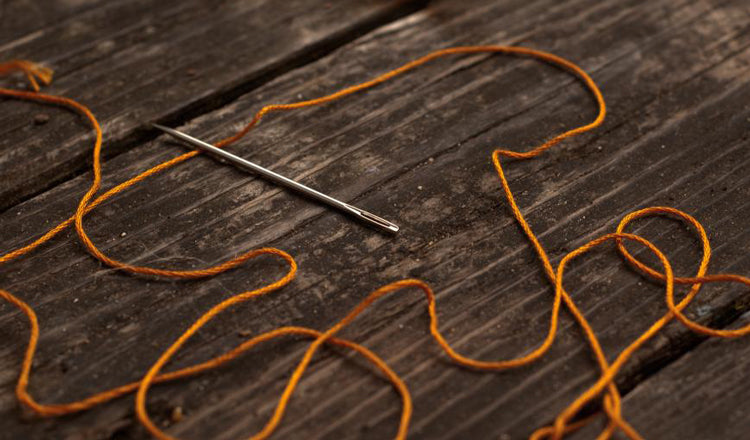
Stories from the great history of Sewing
The fifth season of the BBC’s Great British Sewing Bee is drawing to a close. We’ve seen characters from all walks of life tell their stories and create some amazing work in the process. This got us thinking… how many interesting people and stories are there to be found in the history of the craft?
Our prehistoric ancestors began sewing over 20,000 years ago. It’s true. We have evidence that prehistoric humans used fragments of bone, ivory and horn to shape needles, and used animal sinew as thread to craft their own clothes. It’s a grisly picture, but this early form of sewing meant that communities could pass on the knowledge to better protect themselves from the cold, teaching eachother to attach fragments of fur, hide, skin and bark together to make clothes and blankets.
Queen Elizabeth I gathered with other high-ranking female rulers to practice her embroidery skills. Barbara Paris Gifford, a curator at the Museum of Arts and Design in New York, has noted that sewing was a “favourite activity” amongst these ambitious and powerful women of the time, as it "inspired concentration, conversation, and competition.” She goes on to say that Queen Liz and her powerful peers gathered to sew “much the way male leaders might play golf today.” Who knows what these ladies were scheming about over their needles!
In the 70s and 80s, women in Chile used sewing to fight against military dictatorship. When Augusto Pinochet came to power in September 1973, his military government executed and tortured thousands of Chilean citizens. “Many of the people who disappeared under Pinochet’s rule were men, and their female family members were often left behind to suffer in economic insecurity.” (https://bit.ly/2WABIyr). These women created colourful patchwork pieces known as Arpilleras, which become symbols of opposition to Pinochet’s regime. Eventually, the government recognised the power of these pieces was posing a serious threat to their ideals, and made it a crime to own one.
American film star Henry Fonda used to sew on set. It was once revealed in an interview that famous actor Henry Fonda sat and embroidered satin stitch as a way to wind down between filming scenes. In fact, Fonda admitted that sewing was his favourite hobby, which was incredibly unusual for American men of his generation.
Sewing work found in the tomb of the famous Egyptian pharaoh, Tutankhamun, was some of the most beautiful ever found. When the ancient Pharaoh King died in 1323 BC, he was buried with a whole load of luxury objects including chariots, jewellery, perfumes, and the finest textiles from his wardrobe. They included works displaying stunning decorative needlework that proves there must have been expert sewers in ancient Egypt at the time. From the examples historians have been able to gather, it looks like the decoration can be divided into four main groups: appliqué, applied, beaded and stitched.
If you’re feeling inspired by these stories and are ready to embark on your sewing journey, or stock up on materials for your next project, we’re got you covered. Head to our store and have a look around
